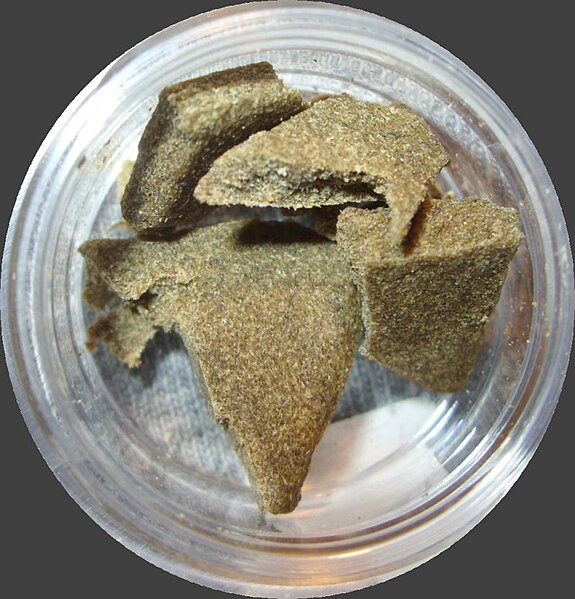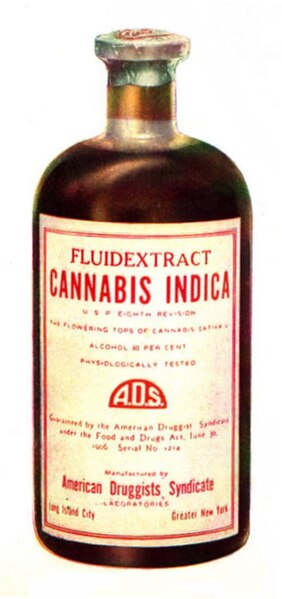Medical cannabis, or medical marijuana (MMJ), is cannabis and cannabinoids that are prescribed by physicians for their patients. The use of cannabis as medicine has not been rigorously tested due to production and governmental restrictions, resulting in limited clinical research to define the safety and efficacy of using cannabis to treat diseases.
Cannabis as illustrated in Köhler's Book of Medicinal Plants, 1897
American medical hashish
Cannabis indica fluid extract, American Druggists Syndicate, pre-1937
An advertisement for cannabis americana distributed by a pharmacist in New York in 1917
A cannabis edible, also known as a cannabis-infused food or simply an edible, is a food item that contains decarboxylated cannabinoids from cannabis extract as an active ingredient. Although edible may refer to either a food or a drink, a cannabis-infused drink may be referred to more specifically as a liquid edible or drinkable. Edibles are a way to consume cannabis. Unlike smoking, in which cannabinoids are inhaled into the lungs and pass rapidly into the bloodstream, peaking in about ten minutes and wearing off in a couple of hours, cannabis edibles may take hours to digest, and their effects may peak two to three hours after consumption and persist for around six hours. The food or drink used may affect both the timing and potency of the dose ingested.
Three hash cakes made with cannabis. Such cakes are often referred to as "space cakes".
Bhang eaters from India c. 1790. Bhang is an edible preparation of cannabis native to the Indian subcontinent. It has been used in food and drink as early as 1000 BC by Hindus in ancient India.
Modern interest in edibles is attributed to Alice B. Toklas and her eponymous 1954 cookbook.
THC infused gummies suitable for sublingual administration. These are 5 milligrams each.








